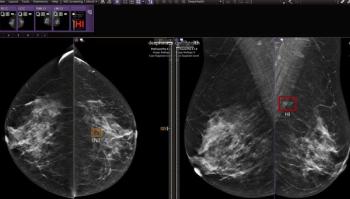
MRI Screening Benefited Women With Prior Breast Conserving Therapy
Women who have previously undergone breast conserving therapy may find a supplemental screening option in MR imaging.
Women who have previously undergone breast conserving therapy may be appropriate candidates for subsequent MR screening, according to the results of a new single-center study published in
The study by Hye Mi Gweon, MD, from the department of radiology and surgery at Seoul National University Hospital, Korea, and colleagues, found that MR imaging detected 18.1 additional cancers per 1,000 women screened, a cancer detection rate that they said was similar to that of high-risk women, such as those who carry the BRCA gene.
“Although annual mammographic screening after breast conserving therapy has been recommended by the National Comprehensive Cancer Network and the American Society for Clinical Oncology, supplemental approaches have also been investigated because of the decreased sensitivity of mammography and higher-than-average risk of subsequent cancer in women with a history of breast conserving therapy,” the researchers wrote.
At the researchers’ institution, MR screening is used in women with a history of breast conserving therapy who have had negative mammography and ultrasound six months prior to undergoing MR imaging. In this study, they reviewed the findings of 607 consecutive women between January 2008 and March 2012 who met these criteria. The median age of the women was 48 years.
In the 607 women, MR imaging detected 11 additional cancers: eight invasive cancers and three ductal carcinoma in situ. This equated to a rate of 18.1 cancers per 1,000 women.
“All detected cancers at screening MR imaging in our study were node-negative T1 invasive cancers (median tumor size, 0.8 cm; range 0.4 cm–1.4 cm) or ductal carcinoma in situ, which is comparable to the results of other studies for high-risk women and for women with a personal history of breast cancer, in which most cancers were node negative and the median size of invasive cancers was 0.7cm–1.8 cm,” the researchers wrote.
The positive predictive value for recall was 9.4 percent and for biopsy was 43.5 percent. MR screening had 91.7 percent sensitivity and 82.2 percent specificity.
The researchers then compared characteristics of women found to have subsequent cancers detected by MR imaging with those who did not. Age 50 or younger at diagnosis was found to be independently associated with MR-detected cancers (P<0.001). In addition, women with a more than 24-month interval between initial surgery and screening also had an increased risk for MR-detected cancers (P=0.011).
The researchers pointed out that there are several drawbacks to this type of screening including a high false-positive rate, cost and tolerability of MR examinations. Additionally, this study was conducted at a single center and did not include all women who had undergone prior breast conserving therapy, meaning that the women referred for MR imaging screening may have had other risk factors for recurrence.
“Despite these limitations, our data suggest that women with a history of breast conserving therapy for breast cancer may be appropriate candidates for breast MR imaging screening,” the researchers wrote.
Newsletter
Stay at the forefront of radiology with the Diagnostic Imaging newsletter, delivering the latest news, clinical insights, and imaging advancements for today’s radiologists.


























